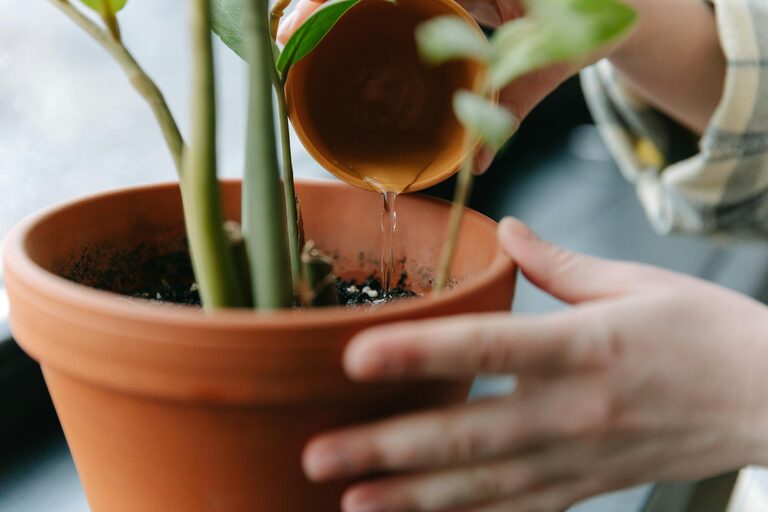Bringing houseplants into your home adds beauty, freshness, and a touch of nature to your living space. However, keeping these plants healthy and thriving can sometimes be a challenge, especially for those new to indoor gardening. With the right care and attention, you can enjoy lush, vibrant greenery all year long. Here are some essential tips to help you maintain healthy houseplants.
Understanding Your Plant’s Needs
Each plant species has unique requirements regarding light, water, humidity, and temperature. Knowing what your specific plants need is the foundation of good care.
Research Your Plant
Before bringing a new plant home, take a few minutes to research its:
– Preferred light level (bright, indirect, low light)
– Watering frequency and amount
– Ideal temperature range
– Suitable humidity level
– Soil type preferences
This information can usually be found on the plant tag or from reputable plant care websites.
Light: The Most Important Factor
Light is crucial for photosynthesis—how plants produce energy. Understanding and providing the right amount is key.
Types of Light for Houseplants
– Bright, indirect light: Near a window with filtered sunlight
– Direct sunlight: Sunlight that shines directly on the plant, often harsh for many indoor plants
– Low light: Rooms that receive very little natural light
Tips for Providing Proper Light
– Place sun-loving plants near south or west-facing windows.
– Use sheer curtains to filter strong sunlight.
– Rotate plants regularly to ensure even growth.
– Consider grow lights if your home lacks sufficient natural light.
Watering Wisely
Overwatering is one of the most common houseplant problems, but underwatering can also be harmful.
How to Water Properly
– Check soil moisture before watering using your finger or a moisture meter.
– Water thoroughly until water drains from the pot’s bottom.
– Allow soil to dry out slightly between waterings, depending on the plant’s needs.
– Adjust watering frequency based on season; plants usually need less water in winter.
Signs of Improper Watering
– Yellow or drooping leaves may indicate overwatering.
– Dry, brittle leaves suggest underwatering.
Choosing the Right Soil and Pot
Using the correct soil and pot affects root health and moisture retention.
Soil Matters
– Use well-draining potting mix suitable for your plant type.
– Avoid garden soil as it can compact and hinder drainage.
– Consider adding perlite or sand to improve drainage.
Pot Selection
– Choose pots with drainage holes to prevent waterlogging.
– Consider pots made from breathable materials like terracotta.
– Repot plants every 1-2 years to refresh soil and give roots more room.
Providing Proper Humidity and Temperature
Indoor environments can be dry, especially during heating seasons.
Increasing Humidity
– Group plants together to create a microenvironment.
– Use a humidifier near plants.
– Mist leaves occasionally, but avoid excess moisture buildup.
– Place plants on trays with pebbles and water for natural humidity.
Temperature Tips
– Keep plants away from drafts, radiators, and air conditioners.
– Most houseplants thrive in temperatures between 65°F and 75°F (18°C to 24°C).
– Avoid sudden temperature changes.
Feeding Your Plants
Fertilizing supports growth, especially during the active growing season (spring and summer).
Fertilizer Basics
– Use balanced, water-soluble fertilizers at half the recommended strength.
– Feed every 4-6 weeks during growth periods.
– Reduce or stop fertilizing in winter when growth slows.
Regular Maintenance and Monitoring
Keeping an eye on plant health helps catch problems early.
Pruning and Cleaning
– Remove dead or yellowing leaves to prevent disease.
– Trim leggy growth to encourage bushiness.
– Wipe leaves with a damp cloth to remove dust and help photosynthesis.
Checking for Pests
– Regularly inspect leaves, stems, and soil for pests like spider mites, aphids, or scale.
– Treat infestations promptly, using natural insecticidal soaps or neem oil.
Troubleshooting Common Issues
Wilting Leaves
Could indicate over or underwatering. Test soil moisture and adjust watering practices.
Brown Leaf Tips
Often caused by low humidity, inconsistent watering, or salt buildup from fertilizers.
Yellow Leaves
May result from too much water, poor drainage, or insufficient light.
Slow Growth
Check light exposure, feeding schedule, and consider repotting if root-bound.
Final Thoughts
Keeping houseplants healthy is a rewarding experience that requires attention to their specific needs. With proper light, water, soil, humidity, and regular care, your indoor garden will flourish and brighten your home for years to come. Happy planting!

